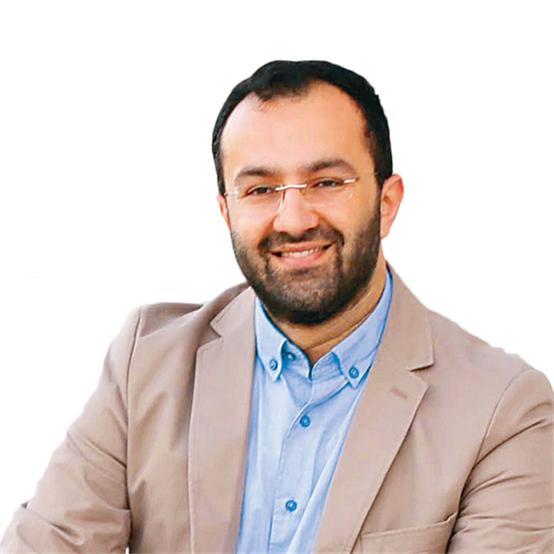On June 26, 1980, Syrian President Hafez Assad was preparing to receive an African diplomat in his palace in Damascus. Arrangements were made according to protocol, and only minutes remained before the guest in question was set to arrive.
While he waited at the palace gates, a grenade suddenly fell at Assad's feet. He dodged the bomb with a quick reflex, but it was followed by a second one. One of the guards present there deactivated the other bomb. However, it was not easy to silence the barrage of bullets that began right after.
When calm finally prevailed after the intense efforts of the special forces loyal to Hafez Assad's younger brother, Rifaat, which lasted for about an hour, there was now a sobering truth: The armed opposition, which had intensified its struggle against the Baath regime for the past several years, had now become powerful enough to launch an attack on the presidential palace.
Before sunrise the next morning, Rifaat Assad had dispatched soldiers he handpicked from the shadow army he commanded to Tadmur Prison by helicopters.
Located in the middle of the desert, 200 kilometers northeast of Damascus, this terrible prison was notorious for its brutal torture of dissidents.
At the behest of Brother Assad, some 1,000 prisoners held here were shot dead with automatic weapons in their beds. Many of them made the transition from sleep to death.
In this massacre, which was carried out as payback for the assassination attempt against Hafez Assad, a number of educated and elite Sunnis, who had been arrested for various reasons, were executed. The Tadmur Prison Massacre was to become a harbinger of the ghastly events in Syria to come.
Before Tadmur, an operation, which was carried out on March 9, 1980, in the town of Jisr al-Shughur in Idlib, where the opposition was concentrated, resulting in the deaths of at least 200 civilians, had also carried Rifat Assad’s signature.
On the morning of September 29, 1981, the people of Damascus faced a situation that had never before been experienced in the history of Syria: Rifaat Assad's special forces stopped Muslim women donning the hijab one by one in the middle of the street and began to rip off their headscarves at gunpoint. This scandalous move, which inflamed the already tense atmosphere in the country, caused a serious uproar among the public.
While it was finally addressed by the Syrian mufti of the time, Sheikh Ahmed Kufatro, he said: “There is nothing we can do,” which led a few scholars and mosque imams to raise their voices in protest.
Realizing that things might get out of hand, Hafez had to address the public on the same evening on state television and say, "We respect all women, and they are all under our protection."
A few months later, between February 2 and 28, 1982, the Syrian city of Hama witnessed an unprecedented massacre. Again, army units commanded by Rifaat Assad laid siege to the city from land and air and slaughtered at least 40,000 people.
The city, which was completely sealed from the outside world during the siege, was in ruins when the operation finally ended. Rifaat Assad would now be referred to as the "Butcher of Hama."
In a statement made by the Syrian administration on November 18, 1983, it was stated that Hafez Assad returned to his role as president after undergoing an appendectomy.
Maariv, one of the leading Israeli newspapers at the time, announced in a special report published at the beginning of the following week that Assad had suffered a severe heart attack and was still in a coma. The report also stated that Assad had advanced diabetes and was suffering from high blood pressure.
Rifaat Assad was so sure that his brother would kick the bucket that he quickly attempted to usurp him. However, things didn’t turn out quite the way he expected.
Hafez Assad emerged from his coma at the beginning of 1984 and reclaimed his throne, while his brother Rifaat, who had overstepped his boundaries, appeared to be exiled abroad.
Rifaat Assad, who first settled in Spain and then in France, lived in exile for 37 years until he returned to Damascus last week, after building a large real estate empire with the money he stole when he emptied the Syrian Central Bank.
The reason why Rifaat Assad, who has the blood of tens of thousands of innocents on his hands and stole millions of dollars from the Syrian people, was granted permission to re-enter his country is the extravagant life of corruption he led while living in Europe.
Bashar Assad gave the green light for his uncle's return to Damascus to prevent his uncle from being tried for money laundering in Spain and France.
Thus, Uncle Assad, who said, "Bashar can no longer remain president" in 2011, was compelled to ask for his nephew's permission to return, only 10 years later, after facing a looming prison sentence.
Rifaat Assad, who will live a life of social seclusion in Damascus as per the agreement he struck with the regime, will continue to live in the memory of the Syrian people as a symbol of brutality in an era of infernal darkness.




















